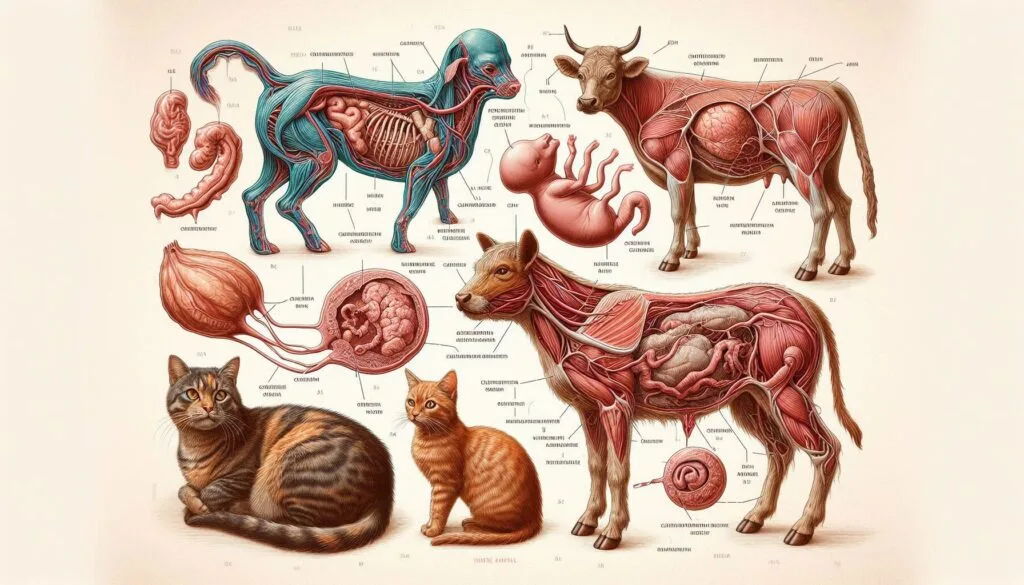Discoid Placenta

Introduction to Discoid Placenta
The discoid placenta is a fascinating structure found in primates, including humans, and certain rodents. This unique type of placenta plays a crucial role in fetal development by facilitating nutrient exchange and waste removal. Understanding the discoid placenta can provide insights into mammalian reproduction and evolutionary biology.
In this article, we will explore the characteristics, functionality, and evolutionary significance of the discoid placenta. We will also discuss how it compares to other types of placentas found in mammals.
What is a Discoid Placenta?
Definition and Structure
A discoid placenta is characterized by a single disc-shaped structure where the chorionic villi are concentrated. This design allows for efficient interaction with maternal blood supply. In humans, this structure is often referred to as monodiscoidal, while some primates exhibit a bidiscoidal type with two disc-shaped areas of villi.
The discoid placenta consists of several layers:
- Chorion: This outer layer contains chorionic villi that extend into the maternal tissue.
- Decidua: The maternal tissue that forms part of the placenta.
- Amnion: The innermost layer that surrounds the fetus.
For more detailed information on placental structures, you can visit The Placenta: Structure and Function.
Types of Discoid Placenta
Discoid placentas can be classified into two main types:
- Monodiscoidal: Found in humans and some primates, this type has one disc-shaped area.
- Bidiscoidal: Observed in certain primates, this type features two distinct disc areas.
Understanding these variations helps researchers study how different species adapt their reproductive strategies.
Functionality of Discoid Placenta
Nutrient Exchange
One of the primary functions of the discoid placenta is to facilitate nutrient exchange between the mother and fetus. The chorionic villi increase the surface area for contact with maternal blood, allowing for efficient transfer of oxygen, glucose, amino acids, and other essential nutrients.
For further reading on nutrient transfer mechanisms in placentas, check out Nutrient Transport Across the Placenta.
Waste Removal
In addition to nutrient transfer, the discoid placenta plays a vital role in waste removal. Metabolic waste products produced by the fetus are transferred back into maternal circulation through the same chorionic villi. This process ensures that harmful substances do not accumulate in fetal tissues.
Hormonal Functions
The discoid placenta also produces hormones crucial for maintaining pregnancy. These hormones include:
- Human Chorionic Gonadotropin (hCG): Helps maintain the corpus luteum during early pregnancy.
- Progesterone: Supports uterine lining maintenance.
- Estrogens: Promote uterine growth and blood flow.
These hormonal functions are essential for a successful pregnancy. For more insights into hormonal roles during pregnancy, visit Hormones in Pregnancy.
Evolutionary Significance of Discoid Placenta
Adaptation to Environment
The evolution of the discoid placenta has significant implications for mammalian development. Its structure allows for a more efficient transfer of nutrients compared to other placental types, such as diffuse or zonary placentas found in horses or carnivores.
This efficiency is particularly important for species that require longer gestation periods or have higher metabolic demands during fetal development. The adaptation enhances reproductive success by ensuring that offspring receive adequate resources throughout gestation.
Comparison with Other Placental Types
To understand the uniqueness of discoid placentas, it’s helpful to compare them with other types:
Diffuse Placenta
In species like pigs and horses, diffuse placentas feature numerous small villi spread over a large surface area. While this allows for extensive contact with maternal blood, it may not be as efficient as the concentrated design of discoidal placentas.
Zonary Placenta
Zonary placentas are found in carnivores such as dogs and cats. They have a band-like region where villi are concentrated around the middle section of the placenta. This design offers some efficiency but lacks the focused nutrient exchange seen in discoidal placentas.
For a deeper dive into different types of mammalian placentas, consider reading Placental Morphology.
Histological Composition of Discoid Placenta
Layers Involved
The histological composition of the discoid placenta consists of several key layers:
- Syncytiotrophoblasts: These cells form an outer layer that invades maternal tissues.
- Cytotrophoblasts: Located beneath syncytiotrophoblasts, these cells provide structural support.
- Fetal Blood Vessels: Embedded within these layers, they facilitate blood flow between mother and fetus.
This complex arrangement allows for effective communication between maternal and fetal circulatory systems.
Maternal-Fetal Interface
The interface between maternal and fetal tissues is critical for placental function. The close proximity of maternal blood vessels to chorionic villi maximizes nutrient uptake while minimizing distance for waste removal.
For more information on histological aspects of placentas, refer to Histology of Human Placenta.
Clinical Implications of Discoid Placenta
Complications Associated with Discoid Placenta
While most pregnancies with a discoid placenta progress normally, certain complications can arise:
- Placenta Previa: This condition occurs when the placenta covers part or all of the cervix, leading to potential bleeding during pregnancy or delivery.
- Placental Abruption: This involves premature separation of the placenta from the uterine wall, which can pose risks to both mother and fetus.
Monitoring these conditions is crucial for ensuring safe pregnancies.
Importance in Obstetrics
Understanding the structure and function of discoid placentas is essential for obstetricians. It helps them identify potential complications early on and manage pregnancies effectively.
For further reading on obstetric care related to placental issues, visit Obstetric Complications Related to Placental Issues.
Conclusion
The discoid placenta is a remarkable adaptation that plays a critical role in supporting fetal development in primates and rodents. Its unique structure facilitates efficient nutrient exchange and waste removal while producing essential hormones necessary for maintaining pregnancy.
By understanding how this type of placenta functions and its evolutionary significance, we gain valuable insights into mammalian reproduction as a whole.
More from Veterinary Anatomy:
Adrenal cortex






Responses